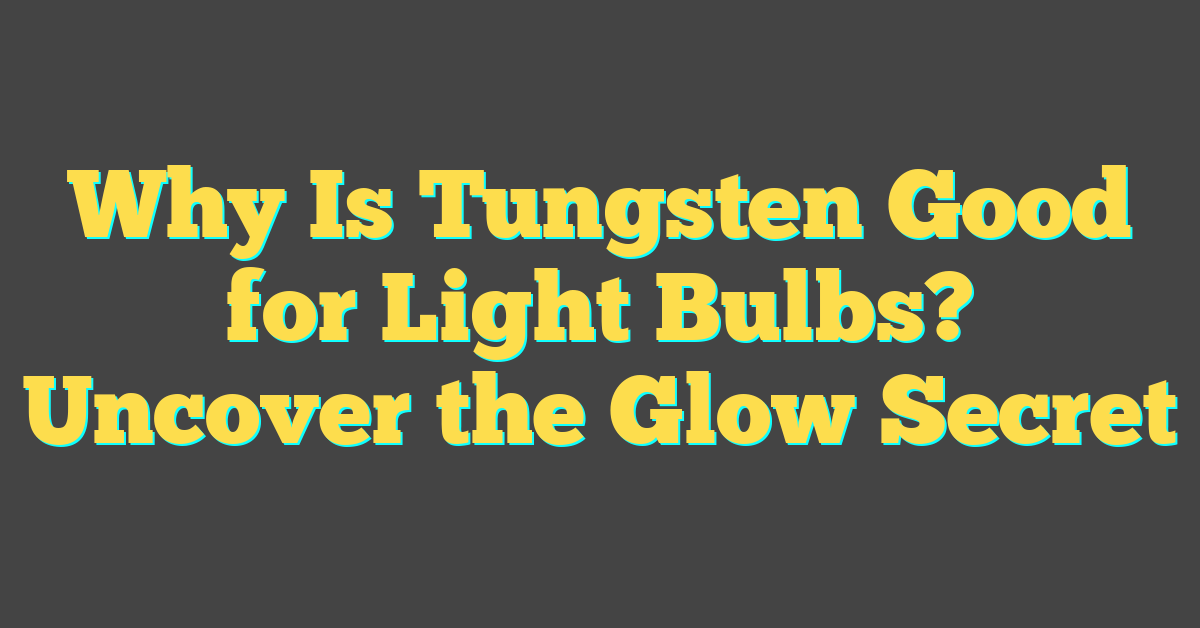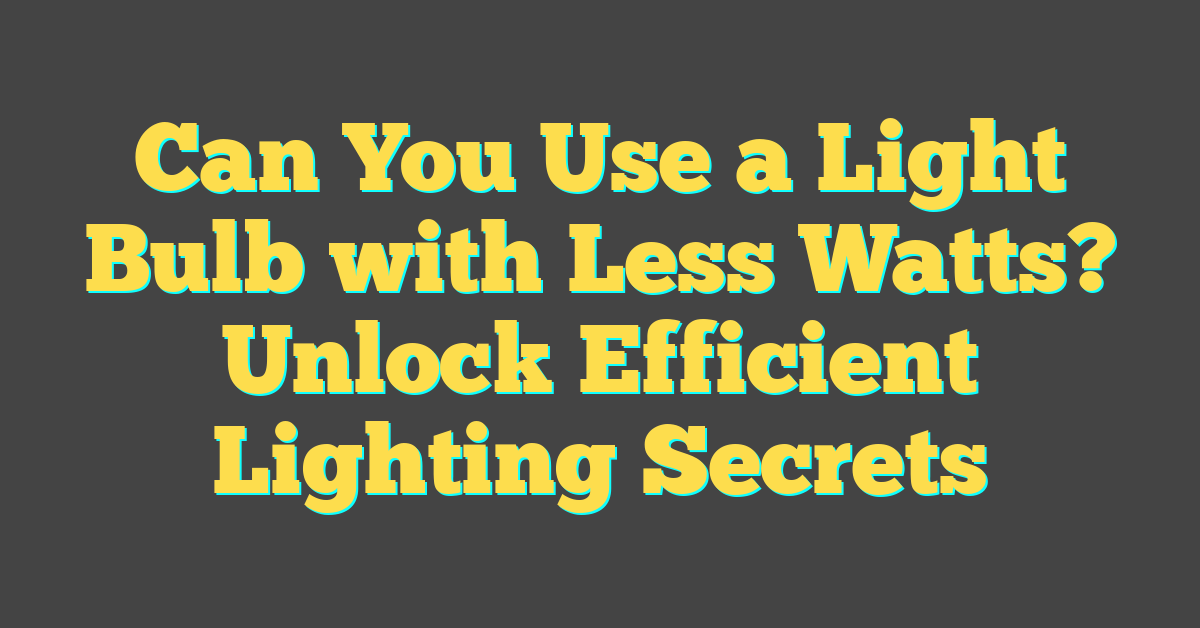Ever found yourself mesmerized by the slow, hypnotic dance of a lava lamp? It’s like a little piece of the ’70s right in your room! But have you ever wondered what kind of magic goes on under that colorful, glowing wax? Spoiler alert: it’s not magic, it’s science – and the right kind of light bulb.

Choosing the perfect bulb for your lava lamp isn’t just about wattage; it’s about setting the mood and ensuring the longevity of your groovy decor piece. Whether you’re a lava lamp enthusiast or just curious about the glow, let’s shed some light on the bulbs that keep these iconic lamps flowing smoothly.
The Science Behind Lava Lamps
Imagine you’ve just flicked the switch on your lava lamp and you’re waiting for the show to start. It’s not sorcery that sets those blobs in motion; it’s good old-fashioned physics. At the heart of a lava lamp is a perfectly balanced dance between two liquids of different densities. The magic begins when the heat from the light bulb warms up the heavier, wax-based substance at the bottom.
As a lighting aficionado, you know it’s all about achieving the ideal temperature. Too cool, and the wax won’t rise; too hot, and it might overdo it. Just right, and you get those serene, slow-moving globules that are downright hypnotic. Here’s where the type of bulb you choose becomes pivotal. Most lava lamps require incandescent bulbs that emit sufficient heat, typically ranging between 15 to 40 watts.
The specific wattage your lamp requires can usually be found in the base, a number you’re already familiar with given your knack for DIY lighting projects. It’s that understanding of how light interacts with the environment that allows you to set the perfect mood layer by layer.
Let’s break it down:
- The bulb heats the wax.
- The wax expands, becomes less dense, and rises.
- Upon reaching the top, it cools, contracts, and sinks back down.
Heat, density, and buoyancy collaborate in a captivating visual piece that doubles as a background ambiance creator and a lesson in thermodynamics. Moreover, as you select the bulb, consider the lamp size and the room where it will sit. A small lamp in a vast space might need a bit more oomph from the bulb to make an impact. Meanwhile, a larger lamp in a cozy area could be overbearing with too much wattage.
When it comes to the specifics of bulb brands, longevity is another factor you’re likely thinking about. Since lava lamps need to be left on for hours to work correctly, picking a bulb with a decent lifespan can save you the hassle of frequent replacements. After all, it’s not just about starting the motion; it’s about keeping the flow uninterrupted for the full mesmerizing experience.
Factors to Consider When Choosing a Light Bulb for Your Lava Lamp

When you’re on the hunt for the perfect light bulb for your lava lamp, there’s a bit more to it than just grabbing any old bulb off the shelf. Your lamp isn’t just a decorative piece; it’s a mini spectacle of physics in action. So let’s illuminate the key factors you should shine a light on to keep those mesmerizing blobs flowing just right.
Wattage is Crucial: First things first, the wattage of the bulb must match the specifications of your lamp. If it’s too low, the wax won’t heat up enough to rise, and if it’s too high, you risk overheating, which could spoil the lamp’s functionality or even be a safety hazard. Most lava lamps require bulbs ranging from 15 to 40 watts.
- Type and Size Matter: Consider the base of the bulb. The standard sizes are E26 and E12 in the US, commonly referred to as “medium” and “candelabra” bases, respectively. Ensure that the bulb type—whether it’s an incandescent, halogen, or an LED—fits the lamp design. The shape also plays a role, as some lamps may need a specific bulb shape to fit the enclosure properly.
Consider Longevity and Color: You want a bulb that lasts since a lava lamp needs to run for several hours to maintain its flow. LED bulbs last longer than traditional incandescents, but not all LED bulbs provide the necessary heat. As for color, most lava lamps work best with a clear or white light bulb that doesn’t alter the colors of the wax and liquid.
- Check the Voltage and Dimming Capability: Apart from wattage, ensure the voltage rating of the bulb matches your home—usually 120 volts in the US. Some folks love a dimmer switch for mood lighting, but not all bulbs are dimmable.
Ambience and Efficiency: The light bulb you choose sets the mood and impacts your energy bill. Halogens offer a warming glow but can be more costly in the long run. LEDs efficiently mimic incandescent lighting and save on energy costs without compromising on that classic look you’re after.
Wattage: Finding the Right Balance

Finding the right wattage for your lava lamp isn’t just about making sure it warms up properly; it’s about safety and efficiency too. Think of wattage like a finely tuned dance—it’s got to be just right to keep the party going. The manufacturer’s specifications are your best friend here. They’ve done the hard work, figuring out the optimal wattage for their lamps, so you don’t have to play the guessing game.
« Can LED Light Bulbs Be Used Outside? Unlock Outdoor Lighting Secrets
Do Light Bulbs Have Resistance? Unlock the Shocking Truth »
Here’s the deal—you might be tempted to go for a higher wattage bulb thinking it’ll make your lamp operate better. But here’s the kicker: too high a wattage could mean overheating, and that’s not just bad for the lamp. It can be a safety hazard. On the flip side, if you’re too cautious and choose a low wattage bulb, the wax in your lamp won’t heat up enough to create that mesmerizing flow.
- Manufacturer’s Recommendation: This is your baseline. Don’t stray too far from it.
- Intensity of Heat: You need just enough heat to get the wax moving without being so intense it risks damage.
- Energy Consumption: A bulb with the proper wattage will be more energy-efficient.
You might wonder whether you can swap the original bulb with a different kind yet still within the recommended wattage. Yes, it’s possible, but tread carefully. Different bulb types can produce heat differently. For example:
- LED Bulbs: While they’re energy-efficient, they might not get hot enough for your lava lamp.
- Halogen Bulbs: These can get hotter than your regular incandescent bulbs, which seem like a good choice, but be wary of the heat they emit.
When you’re on the hunt for the perfect bulb, once you’ve got the right wattage, take a peek at the lumens. Lumens tell you about the brightness of the bulb—you don’t want your lava lamp to double as a spotlight, so aim for a cozy glow. Lighting isn’t just about function; it’s about creating an ambiance that complements your space.
Size Matters: Matching the Bulb to Your Lava Lamp

When it comes to the size of the bulb, it’s not just about wattage – physical dimensions play an essential role as well. You’ll need to ensure the bulb fits nicely within the base of your lava lamp without forcing it. If the bulb is too large, it might not fit at all, or worse, it could pose a risk by touching the glass, which may lead to cracking due to uneven heating.
Different lamps require different bulb sizes. There’s no standard size that fits all. For example, a classic lava lamp might take an S11 shape bulb, which has a smaller, rounder shape perfect for the narrow base. In contrast, other models might require a more standard A19 shaped bulb. Always refer to your lava lamp’s instruction manual or check with the manufacturer if you’re unsure about the size and shape of the bulb you need.
Here’s an effortless way to remember bulb shapes:
- S-Type – Shorter and rounder, often used in small lamps.
- A-Type – The standard bulb shape that’s compatible with many lamps.
- R-Type – Reflectors, which are not usually needed for lava lamps.
Bulb fitting is equally crucial. The most common base sizes you’ll encounter fit are E12 (candelabra) or E26 (standard medium) bases. Mixing these up could lead straight to a return trip to the store, so double-check the base of your old bulb or your lamp’s specifications.
Selecting the perfect bulb isn’t just about the visible light it gives off or the heat it produces to work the lava magic; it’s about finding a harmonious balance within your beloved lamp. As a lighting enthusiast who enjoys a bit of DIY around the house, knowing these nuggets of information helps transform any space into a cozy retreat illuminated by the gentle sway of your perfectly lit lava lamp. Remember, patience and attention to detail are your best friends in achieving that ideal ambient lighting.
Bulb Types: Incandescent vs LED

When you face the choice between incandescent and LED bulbs for your lava lamp, understanding the differences in their function and performance is key. Incandescent bulbs have long been the traditional pick for lava lamps. They produce a substantial amount of heat, which is necessary to warm the wax within the lamp. The heat gently melts the wax, making it rise and fall in the delightful dance you’re after.
On the flip side, there’s a growing interest in using LED bulbs due to their energy efficiency and longer lifespan. However, LED bulbs typically don’t emit the same level of heat as incandescents, which is a big consideration for your lava lamp’s functionality. Since they operate at a cooler temperature, LED bulbs might not be the best fit if they fail to provide the necessary warmth to get your wax moving.
Here are some key points to consider when choosing between these two bulb types:
- Heat Output: Incandescent bulbs emit more heat, essential for lava lamp operation.
- Energy Efficiency: LED bulbs are more energy-efficient, translating to cost savings on your electricity bill.
- Lifespan: LEDs have a longer lifespan, which means you’ll replace them less frequently.
- Environmental Impact: Using LEDs can reduce your carbon footprint due to lower energy consumption.
It’s worth exploring newer LED bulbs that are specifically designed to emit more heat, potentially making them suitable for lava lamps. As you ponder over your choice, remember to weigh the heat needs of your lamp against your desire for energy efficiency and longevity.
Before you make your final decision, consider the bulb’s compatibility with your lamp model. Many lava lamp enthusiasts still prefer incandescent bulbs for their consistent heating performance. Sure, they might consume more energy, but the charm of a smoothly functioning lava lamp often outweighs this consideration. Remember, it’s not just about lighting up; it’s about creating the warm, nostalgic ambiance that only a lava lamp can offer.
Conclusion
Choosing the right bulb for your lava lamp isn’t just about aesthetics—it’s about safety and functionality too. Remember to stick to the manufacturer’s recommended wattage and consider the heat intensity and energy consumption that best suits your lamp. While LED bulbs offer longevity and efficiency, they might not heat your wax as desired. Incandescent bulbs, on the other hand, ensure proper movement and a classic feel but use more energy. Size and shape matter as well, so double-check those specs before making a purchase. Ultimately, the bulb you choose should provide the perfect balance of warmth and light to bring your lava lamp to life. Enjoy the mesmerizing dance of the wax in your perfectly illuminated piece of retro charm!
Frequently Asked Questions
What wattage should I use for my lava lamp?
For the optimal performance and safety of your lava lamp, always follow the manufacturer’s specifications for wattage. Using a bulb with too high a wattage can cause overheating, while too low a wattage may not heat the wax sufficiently.
Can I use an LED bulb in my lava lamp?
Traditional lava lamps require a certain heat level to function correctly, which LED bulbs may not provide. However, there are newer LED bulbs designed to emit more heat. Check if these are compatible with your specific lamp model.
What factors should I consider when choosing a light bulb for my lava lamp?
When selecting a light bulb for your lava lamp, consider the heat intensity, energy consumption, lumens, and the bulb’s compatibility with the lamp’s design (wattage, size, shape, and base fitting).
Why is it not recommended to use halogen bulbs in lava lamps?
Halogen bulbs emit excessive heat which can be a safety hazard and lead to overheating of your lava lamp. Following the manufacturer’s guidelines and using the recommended bulb type is always best.
Should I choose an incandescent bulb or an LED bulb for my lava lamp?
Your determination between an incandescent and an LED bulb should weigh factors such as heat output required for the lava lamp’s operation, energy efficiency, lifespan, and environmental impact. Traditionalists may prefer incandescent bulbs for their consistent heat, while those looking for energy efficiency might lean towards LED bulbs.




